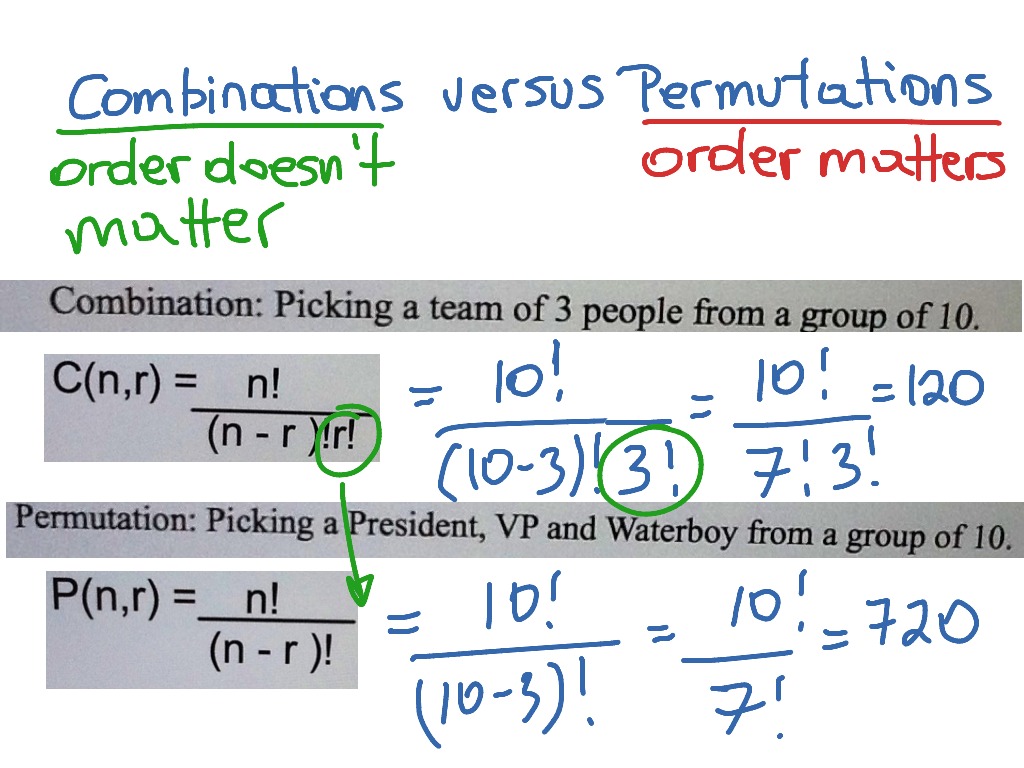

A true “combination” lock would open using either 10-17-23 or 23-17-10. Note: A “combination” lock should really be called a “permutation” lock because the order that you put the numbers in matters. In other words: A permutation is an ordered combination. Permutations are for lists (where order matters) and combinations are for groups (where order doesn’t matter). To a combination, red/yellow/green looks the same as green/yellow/red. CombinationsĬombinations are much easier to get along with – details don’t matter so much.

Order is important and absolutely must be preserved. To a permutation, red/yellow/green is different from green/yellow/red. The order is important.ĭetails matter for permutations – every little detail. Neither would “9-10-8.” It has to be exactly 8-9-10. How about the PIN for my bank account? “The PIN to my account is 8-9-10.” If I want to access my bank account through the ATM, I do need to care about the order of those numbers. The salad could consist of “carrots, tomatoes, radishes and lettuce” or “radishes, tomatoes, carrots and lettuce.” It’s still the same salad to me. All that I care about is that I have a salad that contains lettuce, tomatoes, carrots and radishes. I don’t really care what order the vegetables are when they are placed in the bowl. If I purchase a salad for lunch, it may be a mix of lettuce, tomatoes, carrots and radishes. Permutations and combinations are two important concepts for building this foundation.īut, permutations and combinations cause a lot of confusion: “Which one is which?” and “Which one do I use?” are common questions.

This provides a good foundation for understanding probability distributions, confidence intervals and hypothesis testing. Understanding some of the basic concepts of probability provides practitioners with the tools to make predictions about events or event combinations. In Six Sigma problem solving, it is often important to calculate the likelihood that a combination of events or an ordered combination of events will occur.


 0 kommentar(er)
0 kommentar(er)
